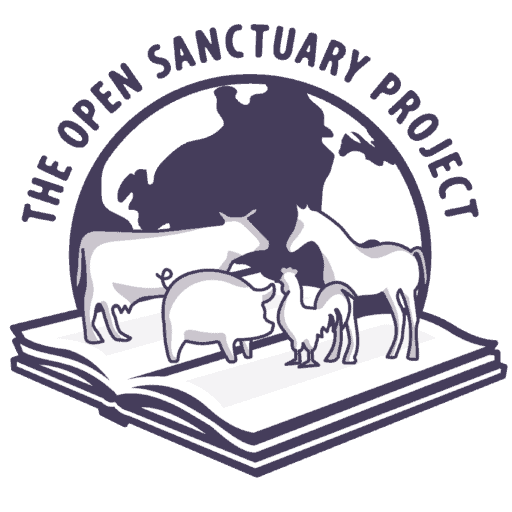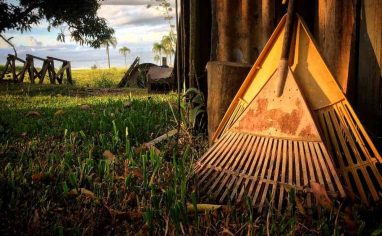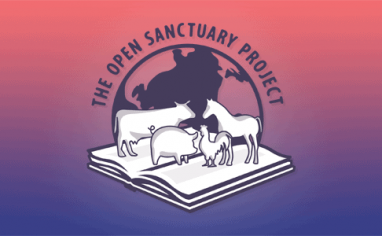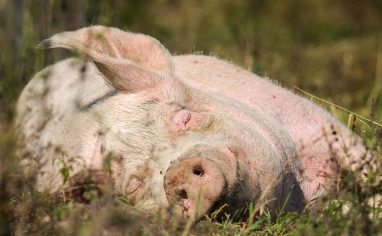Sanctuary sustainability should be the goal of all organizations providing lifelong care. That said, the path towards sustainability is a marathon, not a sprint! Read on to learn about all of the components that can help set you on a path to long-term sustainability!
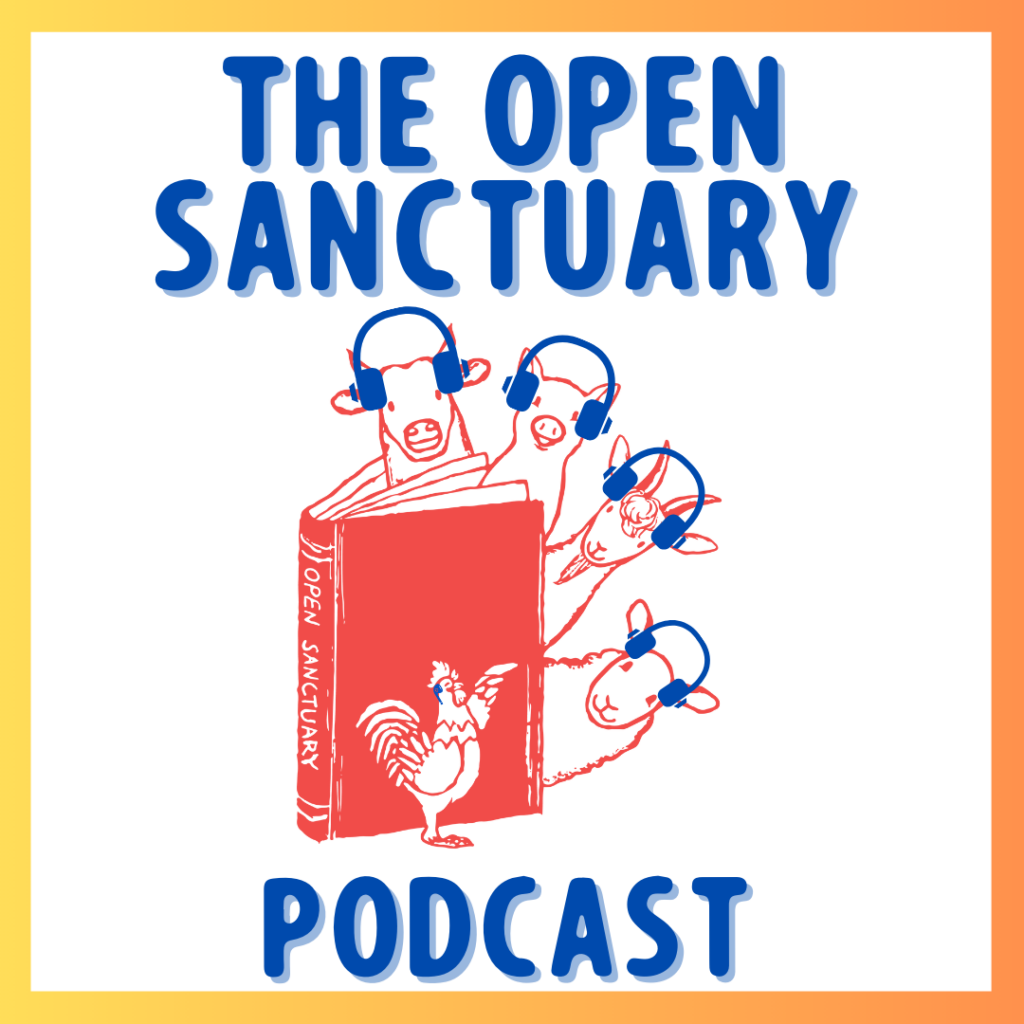
We Have A Podcast Episode On This Subject!
Want to learn about this topic in a different format? Check out our episode of The Open Sanctuary Podcast that covers our intro to sanctuary sustainability!
What Is Sustainability From A Sanctuary Lens?
When you think of “sustainability” as a concept, many ideas may come to mind, from visions of a future that’s safe and enjoyable for everyone, to a world where the choices we make are compatible with the natural world in the long term. At The Open Sanctuary Project, we believe that a vision of sustainability should be built into all aspects of a sanctuary’s operations, from governance and volunteer considerations to animal care planning and rescue policies, as well as financial planning that extends well beyond the near future. Sustainability might seem like an overwhelming lens to consider on top of the stressors of daily care and management, but we believe it’s critical for any organization that promises lifelong care to animal residents to have multifaceted strategies and tools in place to ensure that promised care is always accessible and provided as effectively as possible.
To break down what we here at The Open Sanctuary Project mean by sustainability, we’ve developed a simple framework that builds upon our foundational concept of the capacity variables, which you can find throughout our resources:
Sanctuary Sustainability = Anticipated Capacity Requirements + Adaptability To Change
In more detail, sustainability involves taking stock of your sanctuary’s capacity needs and limitations in the present, then determining how to address those needs in both the near and distant future, while cultivating the resilience that comes from anticipating how unforeseen future challenges might require strategic shifts.
What About Environmental Sustainability?
The term “sustainability” generally evokes environmental connotations, such as operating in a manner that centers the importance of existing in harmony with the larger ecosystems in which we live. The Open Sanctuary Project is committed to promoting environmentally friendly practices, and we have created a collection of resources on how your organization can improve its relationship with the environment. Check out that resource here!
Let’s consider some common daily sanctuary capacity factors and see how to add in the lens of sustainability:
Cultivating Caregiving Sustainability
Considering sustainability from a caregiving lens means ensuring that you have a realistic lifelong care plan for each individual in your care, including anticipated observation, daily care, budgetary, enrichment, and veterinary needs as they age. The foundation of caregiving sustainability is ensuring that you do not overcommit to a resident population for whom you do not have a realistic or adaptable long-term care plan, especially while considering the inevitable increase in every individual’s daily care needs and costs as they age.
The use of a well-thought-out rescue policy can be critical for ensuring that your future resident population remains manageable for your sanctuary and that the spatial capacity of your property is never exceeded, and minimize certain risks that might be deemed outside of your sanctuary’s scope of ability to manage.
While sanctuaries should endeavor to provide lifelong care, it’s also important to have compassionate and realistic plans in place should you need to rehome certain individuals due to circumstances outside your control, such as environmental changes that make it no longer feasible for them to be cared for on your property, or regulatory changes like rezoning troubles that may limit a resident population size in the future. Unanticipated rehoming decisions are never easy for an animal sanctuary to make, but it’s critical to have paths to ensure an organization’s sustainability should it become untenable to continue caring for certain residents.
Cultivating Financial Sustainability
In the short term, establishing financial sustainability begins with creating and adhering to an annual budget for your organization that reflects the realistic needs of your residents, property, organization, and staff. Your budget should include a reasonable amount of padding for unexpected events that may require swift attention, such as property woes, environmental damage, resident health emergencies, or unanticipated rescues.
As your organization grows over the year, you can begin to create reasonable annual budget projections, using the help of tools like our calculator for estimating lifetime care costs by species, which you can find here.
One significant tool for sanctuary financial sustainability is the use of appropriate insurance coverage, which can help mitigate unexpected risks and economic challenges due to accidents, weather events, or an assortment of other surprises. You can learn more about insurance coverage or listen to our podcast on the subject matter here!
As a nonprofitA non-governmental organization whose primary purpose is something other than selling goods or services. organization (formally incorporated or grassroots), you’ll need a realistic fundraising plan to cover your organization’s costs if you’re not planning on covering them all yourself. Financial sustainability means understanding what you need to fundraise year over year, what you can reasonably expect to achieve with your supporters’ capacity, and what needs you might need either in a volunteer base or dedicated staff to grow your fundraising capacity as an organization (especially in cultivating major donors), along with an appropriate emergency fund in case of unexpected shortfalls or immediate challenges that require extra funding. Financial pitfalls are often one of the biggest challenges for sanctuary sustainability, as the lack of general funds can quickly collapse into a series of unsolvable challenges in all aspects of a sanctuary’s operations.
Cultivating Governance Sustainability
Regardless of whether your organization is a formally incorporated charity or grassroots, it’s still crucial to consider how your organization is governed and how leadership will change over time. Sustainable governance practices include having a well-informed, defined, and participatory board of directors (or grassroots volunteers providing equivalent roles and guidance), and frequent considerations of both the sanctuary’s current operations and challenges as well as anticipated future needs. Having a diverse pool of talented minds dedicated to considering how to anticipate and adapt to future conditions is a substantial tool for an organization to be able to weather the unexpected with grace, while maintaining a high quality of life for residents. A significant aspect of ensuring sustainable governance is a thoughtful succession planA formal or informal plan of what happens when a Founder, Executive Director, or other major member of an organization leaves the organization or is incapacitated. developed over time for all major personnel roles, to create a thoughtful and gentle transition as necessary role transitions take place over the years. You can learn more about succession planning with our three-part podcast series here or in our written resource on the topic here.
Governance also encompasses the ever-important task of organizational strategic planning, one of the most important documents a sanctuary can have for its long-term sustainability. Without detailed, adaptable strategies that look to the future of the organization, sanctuaries run the risk of operating with a limited view of where they’d like to be, and therefore, without a lot of necessary thoughtfulness about what to prioritize and what might be an operational risk down the road.
A well-governed, sustainable organization also conducts regular contingency planning to ensure that disruptions or surprising events at a sanctuary are not destabilizing to operations, thanks to clearly defined steps to contain emergencies. You can learn more about contingency planning here via our written resource or podcast episode!
Cultivating Community Sustainability
A sanctuary should always consider the community in which it resides and receives support, as well as how to cultivate resilient relationships with the humans who help make the organization a success. Staff, volunteers, supporters, and even neighbors to the property should all be thoughtfully considered within the umbrella of a sanctuary’s community; without them, most sanctuaries will struggle to remain viable year after year.
For sanctuaries that rely on caregivers for daily care tasks, considering how to maximize caregiverSomeone who provides daily care, specifically for animal residents at an animal sanctuary, shelter, or rescue. retention is critically important. Caregiving is challenging work that requires learning many specialized skills and strong observational routines, but caregivers are sometimes not provided with the resources and environment to be able to commit to the organization for the long term (either due to lack of financial viability, lack of growth opportunities, poor management decisions, or risks of compassion fatigue and burnout), and when caregivers leave, hard-won and important sanctuary knowledge and processes are also lost. Sanctuaries should take extra care to ensure that caregivers are supported, regularly listened to, provided with safe and comfortable conditions, and offered livable wages and opportunities for growth, particularly if they are employees of the organization. To learn more about caring for caregivers, visit our resource here.
To help cultivate a sustainable volunteer base, sanctuaries need to practice good volunteer stewardship, including regular communication, necessary training for specific tasks or events, providing leadership roles for more involved participants, and regularly thanking and celebrating the contributions of the volunteer base, such as with formal recognition or potlucks. Volunteers are often the lifeblood of sanctuaries, and if they feel underappreciated or not clearly communicated with, they may not decide to stick around or be as reliable in the event that extra hands are critical due to an emergency. Sanctuaries looking to maximize their volunteer sustainability in the future may wish to formally invest in a paid director of volunteer management to ensure that this critical resource is appropriately cared for and available when needed.
Cultivating sustainability in a supporter base means frequent, clear, accurate, and transparent communications with the public and donors. This can be one of the more challenging populations to hold onto in the long term, as supporter communications often can take up a lot of a sanctuary’s bandwidth, either via social media posts, newsletters, photos and videos, or personal communications with larger donors. It also means monitoring social media channels, interacting with the public, and finding new ways to engage or educate both in-person and digital visitors. Having a clear social media strategy, educational planning, and delineated roles for both public and donor engagement are all key aspects of keeping supporters informed, excited, and willing to help out the sanctuary each year, especially in stressful times when more donations are necessary or if the sanctuary needs additional help during a critical event.
Commitment To Future Sustainability Is A Daily Practice
As you might have noticed, sustainability considerations are intertwined with nearly all aspects of a sanctuary’s daily operations and planning. Sustainability planning can seem like an unachievable goal when faced with the realities of limited bandwidth and an ever-growing list of tasks to achieve with limited assistance. The critical thing to remember is not to get overwhelmed, but to start small! Think about how you can integrate bite-sized steps into your organization’s daily care and future planning, which can build into the tools necessary to not just survive as a sanctuary year after year, but truly thrive as a resilient, well-operating organization with a robust, supportive community, and residents who can truly enjoy the fulfilled promise of a lifetime of compassionate, comfortable care.
What Does Sustainability Mean To You? What Did We Miss?
Sustainability is a vast topic for sanctuaries, one that we’re committed to untangling and creating meaningful dialogues about! How does your organization think about sustainability? Are there any tools or frameworks you use to plan for the future? Tell us about them here!
